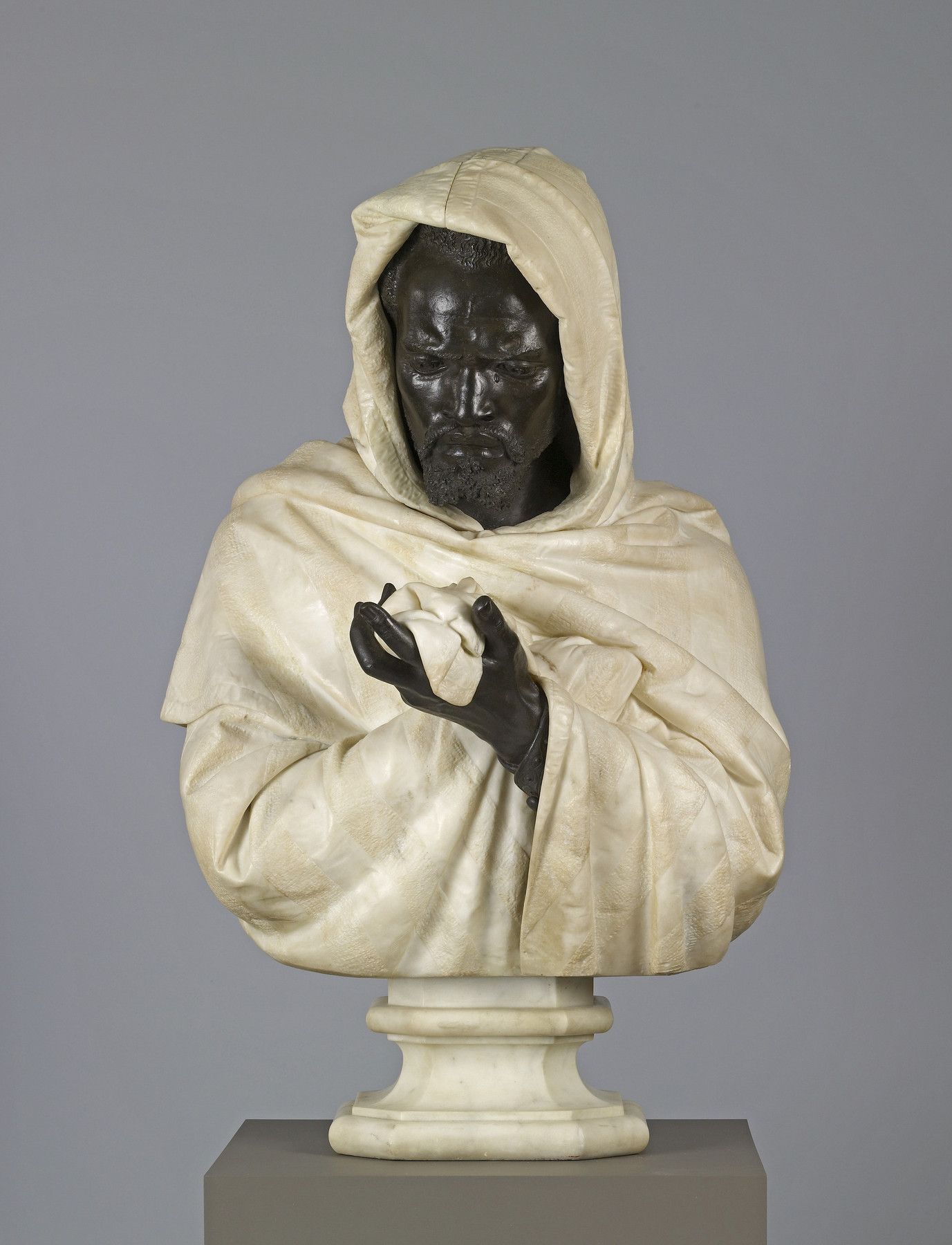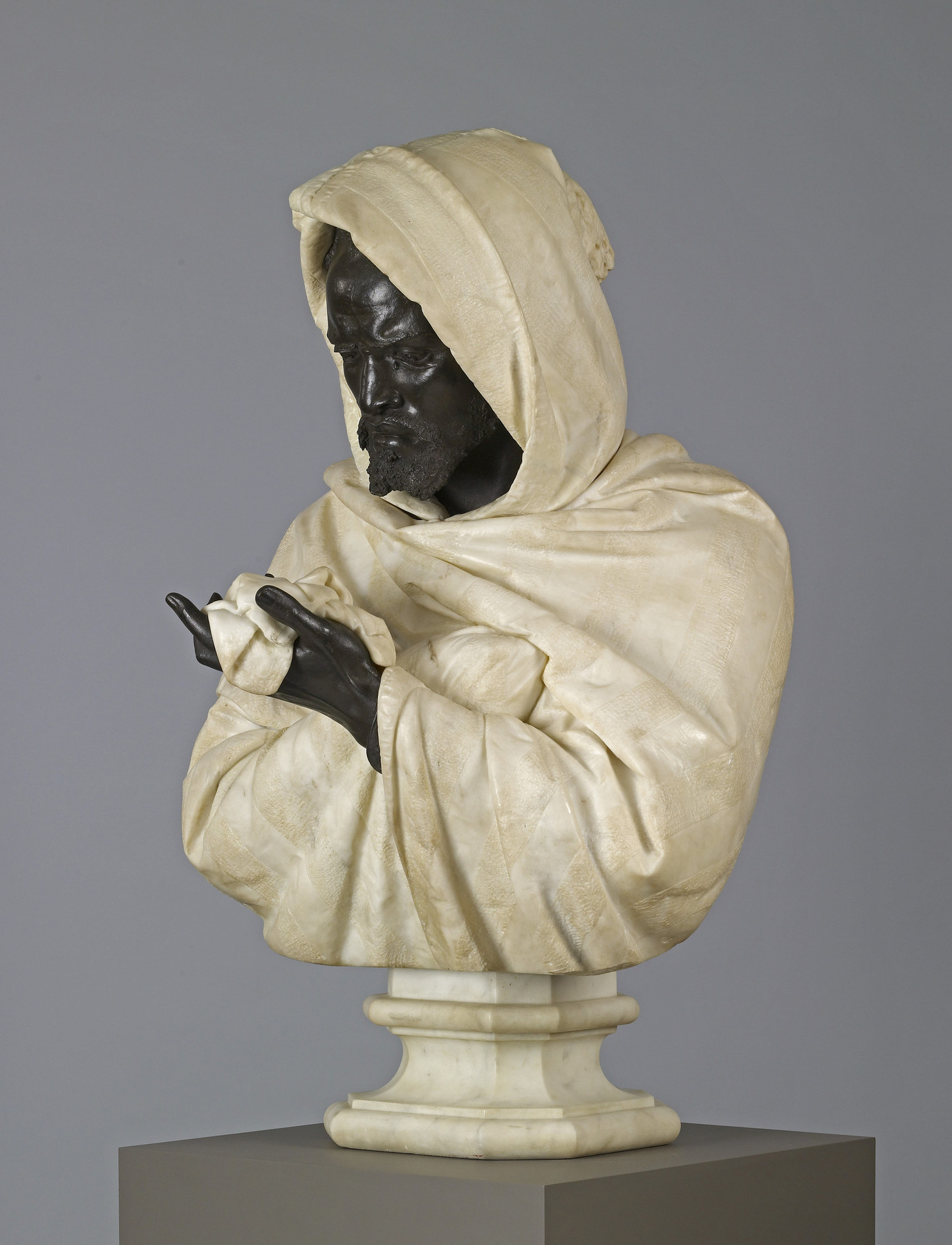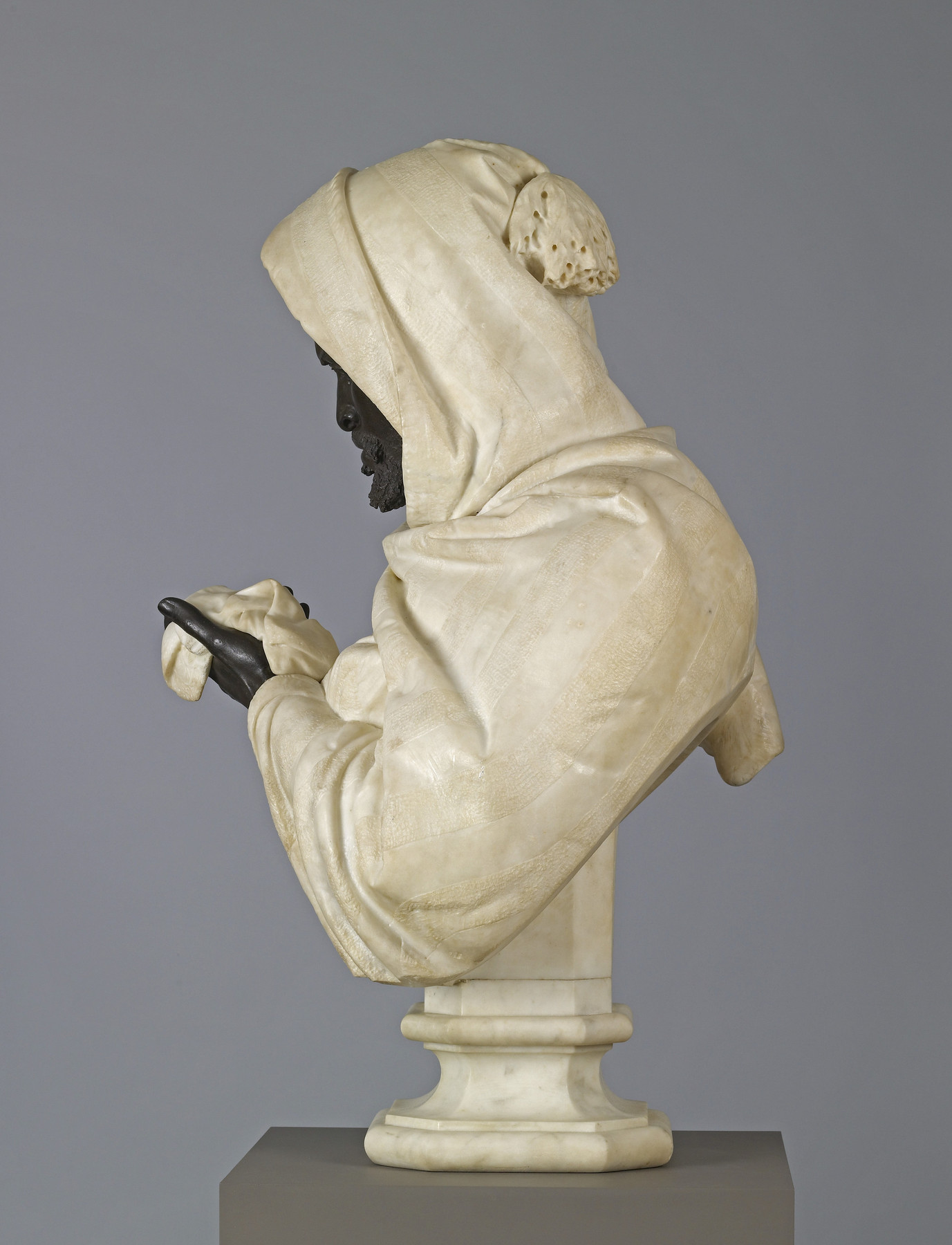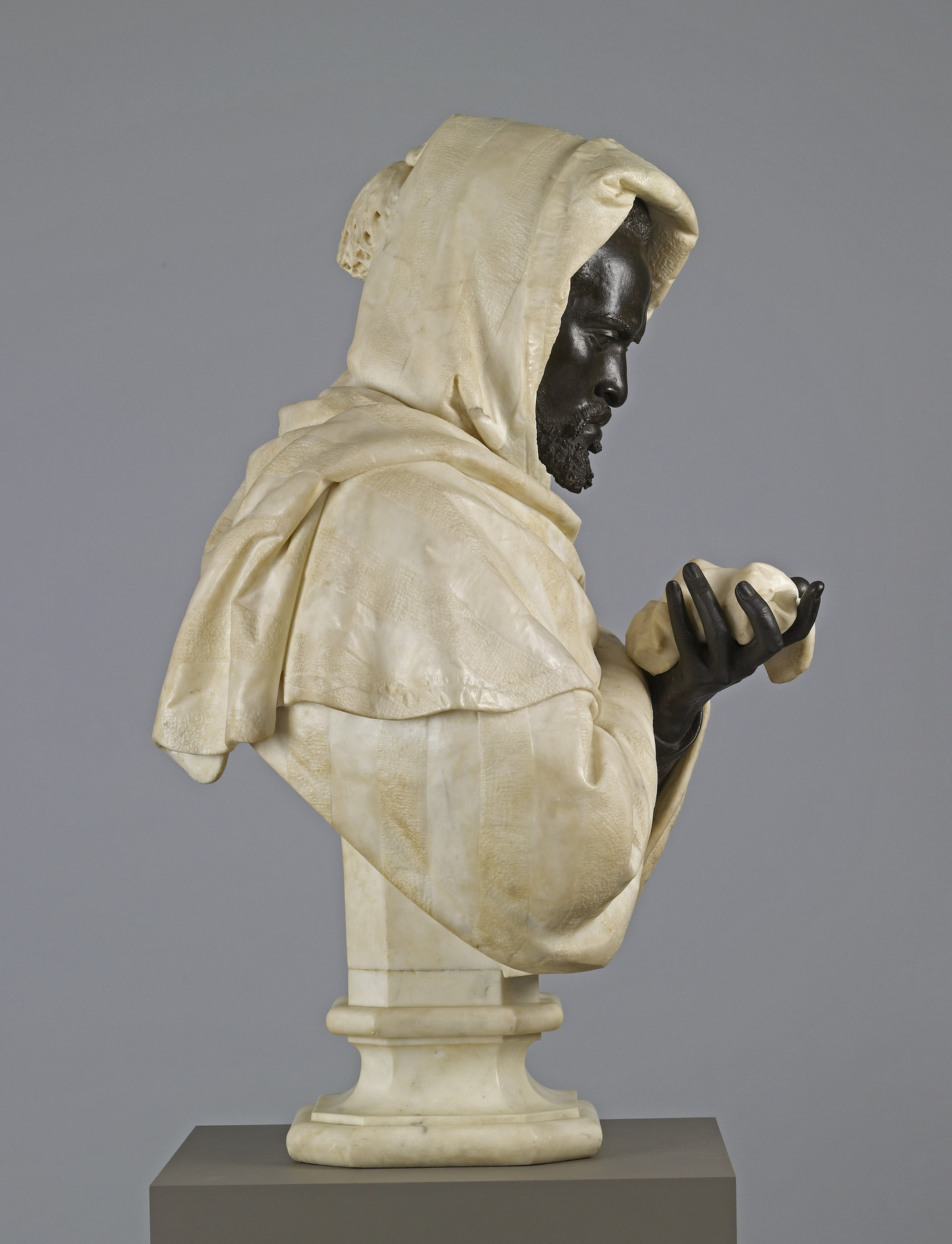Othello
(18th and 19th Centuries )
This life-sized work, which is known in about ten versions, shows Shakespeare’s Othello contemplating Desdemona’s handkerchief as he realizes her innocence. A tear runs from his left eye. The sculpture combines marble and bronze to striking effect. The marble is subtly patterned to suggest a textured fabric, and the face and hands in bronze are finely detailed.
Pietro Calvi was born in Milan in 1833 and studied at the Milan Academy. He often worked in a combination of bronze and marble in an “Orientalist” style, portraying Africans or those of African descent. He exhibited internationally, including at World’s Fairs.
Calvi’s Othello is especially notable for the way in which it intersects with 19th-century ethnographic sculpture, but also overturns the assumptions of this genre. Ethnographic sculptures aimed to depict racial “types,” therefore denying a subject’s individuality. Often in “Orientalist” artworks non-white figures are depicted as savage and lazy as part of a racist ideology that underpinned and justified colonial expansion. In stark contrast, here we are asked to emphathize with Othello, who is engaged in deep thought and undergoing intense emotion.
This work is probably modeled on the Black actor Ira Aldridge (1807–67), who was internationally known for his portrayal of Othello, “the Moor,” and used his fame to speak out against slavery. Although Calvi’s sculpture was modeled a year after Aldridge’s death, the actor’s appearance was well known from photographs and prints.
Inscription
Provenance
Provenance (from the French provenir, 'to come from/forth') is the chronology of the ownership, custody, or location of a historical object. Learn more about provenance at the Walters.
Private Collection, Kent, United Kingdom; purchased by Robert Bowman Gallery, London, 1996; Mr. and Mrs. F. Partridge, Kent, United Kingdom, 1997; purchased by Bowman Sculpture, 2015; purchased by Walters Art Museum, 2016.
Geographies
Italy, Milan (Place of Origin)
Measurements
Approximate H: 34 5/8 × W: 22 1/16 × D: 22 13/16 in. (88 × 56 × 58 cm)
Credit Line
Museum purchase with funds provided through the bequest of Laura Delano Eastman by exchange, 2016
Location in Museum
Accession Number
In libraries, galleries, museums, and archives, an accession number is a unique identifier assigned to each object in the collection.
In libraries, galleries, museums, and archives, an accession number is a unique identifier assigned to each object in the collection.
27.609














